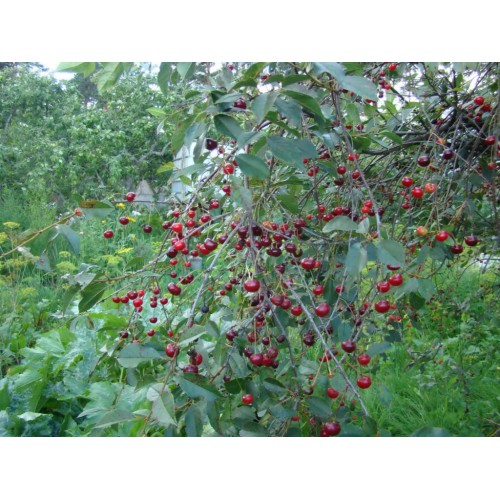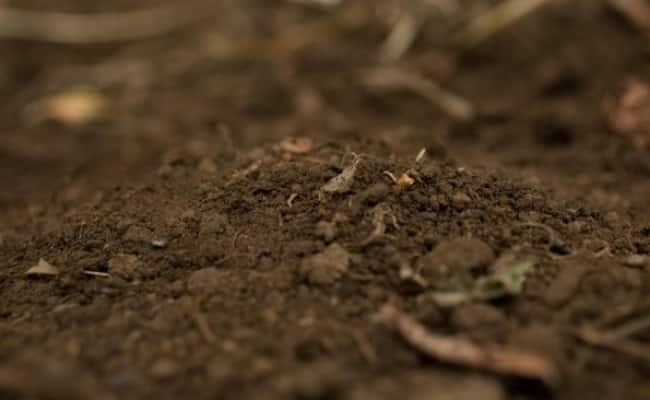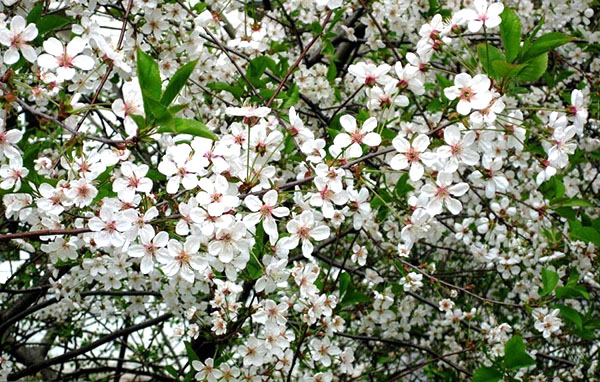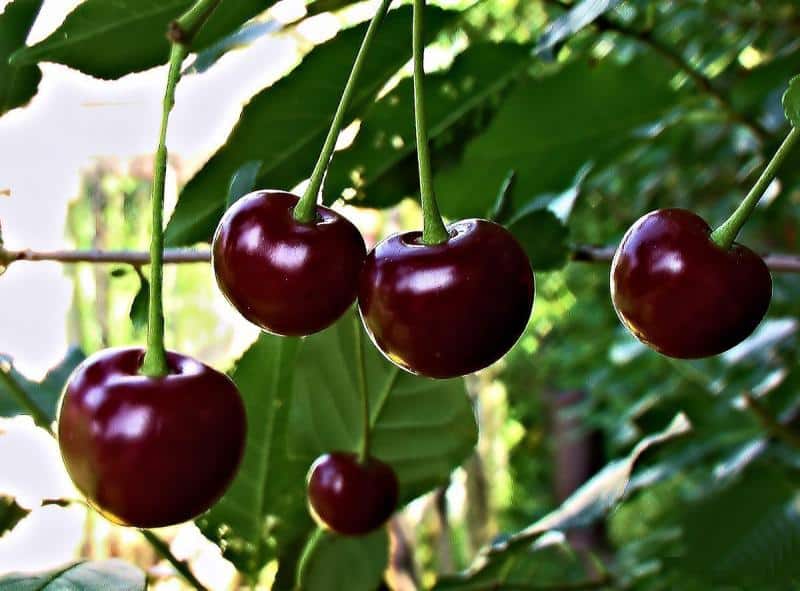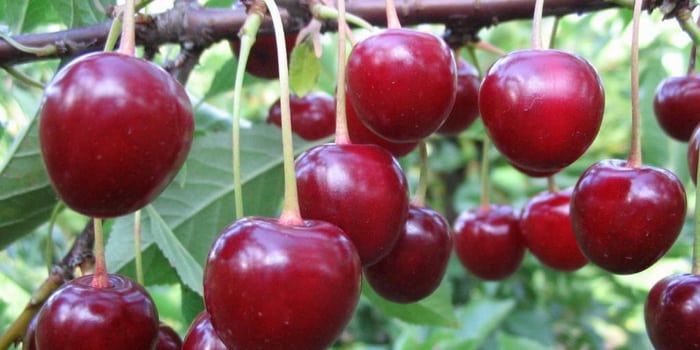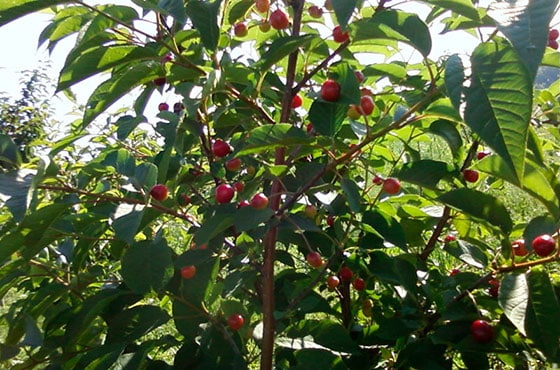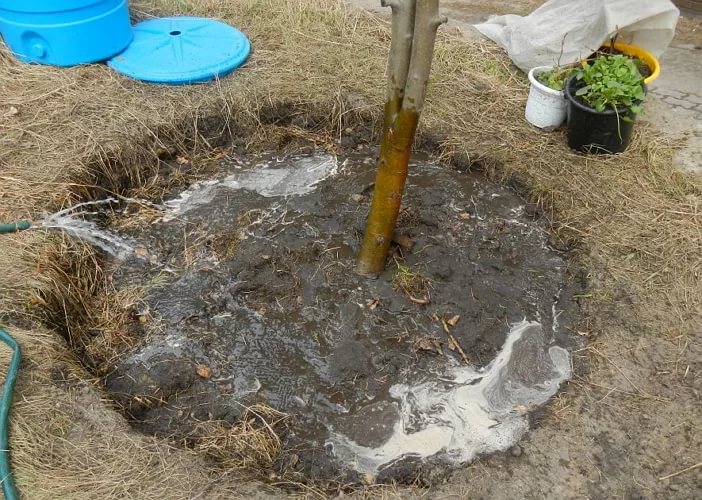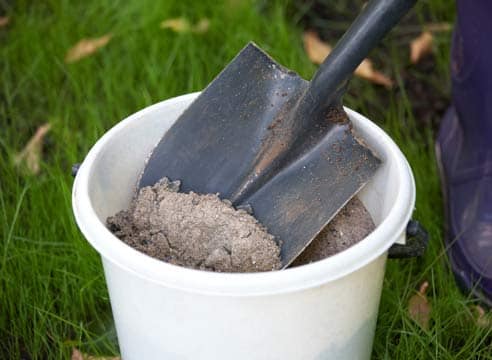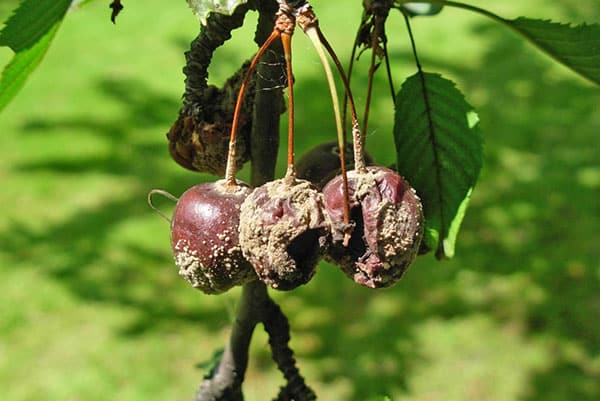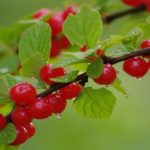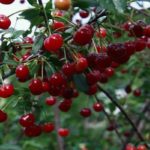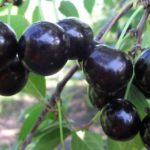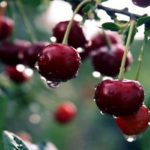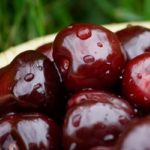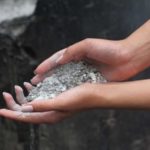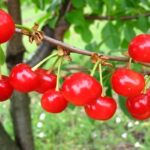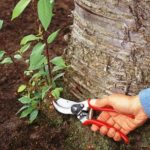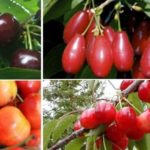Cherry trees have been planted in Rus' for a long time. According to some sources, cherries were first brought to the Russian Empire in the 12th century. But even now, centuries later, interest in cherries has not dried up. Every year, breeders develop new varieties and improve old ones. You can find varieties of cherry trees to suit every taste. One of the most common varieties in many regions is Vladimir cherry. This is an unpretentious variety that is famous for its productivity and taste of berries.
- Breeding history and zoning
- Description and characteristics of the variety
- Drought and frost resistance
- Soil requirements
- Pollinators, flowering period and ripening time
- Productivity, fruiting
- Taste characteristics of berries
- Neighborhood with fruit trees
- Methods of propagation and planting
- Tree care
- Crown trimming
- Regularity of watering
- Fertilizers and fertilizing
- Whitewashing the trunk
- Preparing for winter
- What diseases and pests is it susceptible to? Ways to deal with them
Breeding history and zoning
It is still unknown how the Vladimirskaya variety was created. But according to some data, the hybrid was bred in the 19th century in the Vladimir region. This is where cherries got their name. The parental varieties that were used to create the hybrid also remained unknown. Vladimirskaya is often sold under other names: Dobroselskaya, Gorbatovskaya, Parentitelava, Vyaznikovskaya. These are all the same variety.
In 1947, the Vladimirskaya hybrid was zoned and included in the State Register. The variety is grown in almost all regions of Russia. The southern climate and climatic conditions of the central regions are especially suitable for growing.
Description and characteristics of the variety
The culture has a lot of advantages, thanks to which Vladimirskaya has won the love of many gardeners. The hybrid is characterized by better performance in terms of yield and resistance to certain diseases of fruit trees.
It is also important to pay attention to the frost resistance and resistance of the tree to drought, the timing of fruit ripening and pollination.
Drought and frost resistance
One of the disadvantages of the Vladimirskaya hybrid is the low frost resistance of the buds. If the winter is frosty, then there is a high probability that part of the tree will freeze. Therefore, it is advisable to plant seedlings in warm areas with moderate winters. This variety will not take root in the north.
Like many varieties of cherry trees, Vladimirskaya tolerates dry summers well.The tree does not need frequent watering. It is recommended to water cherries several times a season. But it is still undesirable to allow the soil around the trunks to dry out. The tree does not tolerate such conditions well.
Soil requirements
Seedlings are planted in open sunny areas that are well ventilated. In the shade, cherries grow poorly and produce low yields. Particular attention should be paid to the choice of soil for planting. Vladimirskaya does not like swampy, damp areas where water stagnates or groundwater lies nearby. Although the crop also does not like dry soil, excessive moisture has a more detrimental effect on the health of the tree.
It is not recommended to plant seedlings on sandy and clayey soil types. It is better to plant seedlings in southern areas or hills. The soil must be breathable. For planting, preference should be given to light, fertile soils with a loose structure. Dense soil has a bad effect on tree growth and fruiting.
Pollinators, flowering period and ripening time
The Vladimirskaya variety is self-sterile. To pollinate the inflorescences, other varieties of cherries are planted next to the tree. Cherry varieties such as Shirpotreb Chernaya, Fertile Michurina, Turgenevka, Amorel Rozovaya, Lyubskaya and Vasilyevskaya are suitable as pollinator trees. The more pollinating trees grow nearby, the higher the yield of Vladimirskaya.
Bees are attracted to the garden for pollination. To do this, honey-bearing plants, such as lungwort, bellflowers or thyme, are planted next to the cherry. In addition, spraying the inflorescences with honey or sugar diluted in water helps.
Cherry trees bloom in mid-May. Mass flowering occurs in the last days of May. The petals are white, the inflorescences are collected in bunches of 5-6 pieces.For the Vladimirskaya hybrid, mass ripening of the crop is uncharacteristic. The cherries turn red gradually. The first ripe berries from the tree are collected from July 10. Vladimirskaya belongs to the early ripening hybrids.
If the fruits are not picked from the tree, they will gradually fall off and become unsuitable for eating or preparing processed products.
Productivity, fruiting
More than half of the ovaries are formed only on young branches, so old stems are cut off so that they do not take away nutrients. The fruiting of the variety varies in different areas. In northern latitudes, the yield of the variety is lower, since the buds of the tree freeze during severe frosts, and it is on them that most of the harvest is formed. Areas with moderate, non-frosty winters are suitable for growing Vladimirskaya.
Cherry has a high yield. On average, from 20 to 30 kg of cherries are harvested from one adult plant, provided that the cherries grow in a warm climate. In the northern regions, the yield is only 5-6 kg. To increase productivity, it is necessary to add mineral and organic fertilizers to the soil and trim old branches.
Taste characteristics of berries
The berries are round in shape, ranging from 1 to 2 cm in diameter. On average, the weight of one berry ranges from 2.5 to 3.5 g. Having reached full maturity, the skin and pulp acquire a rich burgundy hue, almost black. The texture of the pulp is dense, juicy, slightly lighter than the skin. The taste is sweet and sour, the pulp has a rich cherry aroma.
Cherries are used to make jam, compotes, freeze for the winter or eat fresh. The bone is easily separated from the pulp. The berries tolerate long-term transportation well and are suitable for sale.
Neighborhood with fruit trees
Cherry tolerates well in proximity to other fruit trees.But it is undesirable to plant seedlings next to a pear, plum and apple tree. In addition, other varieties that begin to bloom at the same time as Vladimirskaya are considered the best neighbors for the variety. These varieties include:
- Amorelle Pink;
- Lotovaya;
- Shubinka Pink;
- Pink bottle;
- Griot Moscow;
- Rastunya;
- Vasilievskaya.
It is not recommended to plant currants next to the hybrid. It is worth planting peas and garlic on tree trunk circles. Peas saturate the soil with nitrogen, and the smell of garlic repels aphids from trees.
Methods of propagation and planting
There are several ways to propagate a cherry tree:
- seedlings;
- bones;
- cuttings.
The easiest way to grow is using a seedling.
- First, they dig up the soil and mix it with mineral fertilizers and organic matter.
- Straw, grass and fallen leaves are laid at the bottom.
- Then add 2 buckets of rotted compost.
- Water the soil generously.
- Before planting, the roots are inspected and damaged ones are cut off.
- The root system is placed in growth stimulants for 12 hours.
- A long stake is driven into the center of the hole.
- Place the seedling in the hole, straighten the roots and cover them with soil.
- The soil around the trunk is compacted and watered abundantly with warm water.
- The seedling is tied to a stake.
After planting the seedling, the soil around is mulched with peat, humus and sawdust. The thickness of the mulch should be at least 10 cm. At first, the seedling should be left tied to a peg until the cherry takes root in a new place.
Tree care
To increase productivity, cherry trees need to be looked after. Minimal care includes organizing watering, fertilizing the soil and forming the crown.Without care, the tree will quickly become overgrown with old branches and stop bearing fruit.
Crown trimming
The first time the cherry tree is pruned is after planting. Pruning is carried out in early spring, 3-4 weeks before blooming. During pruning, skeletal branches are not shortened, only excess branches are removed. The sections are treated with garden varnish or ordinary brilliant green. The crown of the tree should consist of 5-7 branches. The central branch is left 15-25 cm long. In subsequent years, the tree is pruned every year.
For pruning, use only well-sharpened pruning shears, which do not injure the stems and leave even cuts on the branches. The sections are disinfected immediately after circumcision.
Regularity of watering
Cherry trees are watered several times during the fruiting season. But watering should be plentiful. At one time, 10-15 liters of water are used for irrigation. For irrigation, use only warm water heated in the sun.
Watering times:
- After the flowering period.
- 4-5 weeks after the first watering, when the berries begin to turn red.
- The fourth watering is carried out after harvesting.
- The trees are irrigated for the last time before the onset of cold weather.
Before watering, the soil around the trunks is loosened and all weeds are removed.
Fertilizers and fertilizing
After planting the seedling in a permanent place, the cherry tree does not need feeding for the first year. In the second year, organic matter and mineral fertilizers are already added to the soil. But it is best to start feeding trees 2-3 years after the start of fruiting.
Feeding:
- After the snow melts, the soil around the trunk is sprinkled with wood ash.
- Before flowering, a fertilizer based on manure, fermented grass solution and bird droppings is applied to the soil (the same fertilizer is applied when the berries ripen).
- After the harvest and after the autumn digging of the soil, bone meal and leaf ash are added to the soil.
It is important to ensure that the soil has more acids and moisture.
Whitewashing the trunk
With the onset of autumn, the trunk and skeletal branches are whitened with lime mixed with copper sulfate. The trunk is also whitened using special paint for trees. It is not recommended to whitewash young trees that are not yet 5 years old.
Preparing for winter
In autumn, the soil around the trunks is dug up, having previously cleared it of leaves and fallen fruits. Then the soil near the trunk is mulched with humus and peat.
What diseases and pests is it susceptible to? Ways to deal with them
- aphid;
- plum moth;
- coccomycosis;
- moniliosis
To prevent the appearance of coccomycosis in the fall, be sure to remove foliage and fruits from the area. To prevent moniliosis, trees are sprayed with a 7% urea solution. During bud break, the branches are treated with 3% Bordeaux mixture.
Branches with a lot of aphids are rinsed in a concentrated solution of laundry soap. Treatment of trees with Fitoverm helps against plum moth. Add 1 tbsp to the preparation. l. liquid soap and treat the trees.

